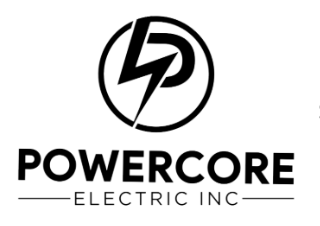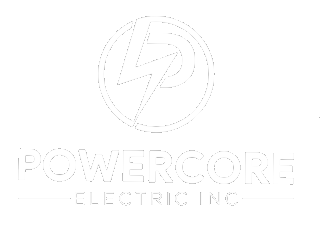Overview
Kilowatt solar panels produce energy based on their kilowatt (kW) output at any given moment and the total energy they generate over time, measured in kilowatt-hours (kWh), which is crucial for understanding usage and costs. The article emphasizes that knowledge of these metrics, along with factors such as sunlight exposure, array positioning, and temperature, is essential for homeowners to optimize their solar energy systems for efficiency and cost savings.
Introduction
Navigating the world of solar energy can feel overwhelming, especially with the many terms and metrics involved. Understanding the difference between kilowatts (kW) and kilowatt-hours (kWh) is essential for homeowners looking to maximize their solar panel systems. While kilowatts measure the instantaneous power output of your panels, kilowatt-hours track the total energy produced over time—information that directly impacts energy bills and overall efficiency.
As the solar industry continues to grow, so does the importance of grasping these concepts. From selecting the right solar batteries to exploring government incentives, this article will guide homeowners through the essential factors that influence solar panel performance, helping them make informed decisions for a more sustainable and cost-effective energy future.
Whether it’s understanding efficiency ratings or evaluating installation costs, the journey to harnessing solar energy begins with knowledge.
Understanding Kilowatts and Kilowatt-Hours in Solar Energy
In the realm of photovoltaic systems, understanding the distinction between kilowatts (kW) and kilowatt-hours (kWh) is essential to optimizing your array’s capability. Consider kilowatts as a snapshot of how much energy your photovoltaic systems are generating at any moment. For example, if your system is producing 5 kW of power, that’s the immediate output.
On the flip side, kilowatt-hours signify the total power generated over time, which is crucial for understanding your usage and costs. So, if your photovoltaic panels operate at 5 kW for 3 hours, they’ll produce 15 kWh of power. This knowledge empowers eco-conscious homeowners like you to assess how much power your system can generate and how it affects your utility bills.
By learning to read these metrics, you can optimize your installation for maximum efficiency and savings. Additionally, understanding your energy needs is essential for selecting the best batteries for efficient energy storage. Consider exploring government programs for renewable energy, such as the federal tax credit, which can significantly reduce your installation costs.
With Japan’s commitment to reducing carbon emissions, there’s been substantial government investment in renewable energy infrastructure, making now a great time to consider alternative options. The global renewable energy sector is projected to grow from $189.5 billion in 2022 to $607.8 billion by 2030, reflecting an annual growth rate of 20%. This growth reinforces the importance of understanding kilowatt and kilowatt-hour metrics in evaluating panel efficiency.
As Paul Chiao, sales and marketing director at Enkonn Solar, points out, ‘Comprehending the power generation metrics is crucial for homeowners to make informed choices regarding their investments in renewable technology.’ When choosing batteries for photovoltaic systems, assess factors such as capacity, discharge rate, and warranty to ensure you select the optimal choice for your power storage requirements. By integrating these insights and understanding available government programs, you can navigate the changing environment of renewable resources while making sustainable choices.
Key Factors Affecting Solar Panel Energy Production
Multiple crucial elements contribute significantly to the power generation of solar devices, and comprehending them can enable homeowners to enhance their systems:
- Sunlight Exposure: The amount of sunlight your panels capture is crucial for their output. Homes situated in regions with steady and direct sunlight are likely to produce more power. Research indicates that the angle and duration of sunlight exposure can significantly impact performance, making it important to assess your location. Particularly in bright areas such as California, utilizing both active (liquid and air types) and passive heating techniques can improve efficiency.
- Array Positioning: Correctly aligning your photovoltaic arrays towards the sun is essential for optimizing power capture. The optimal angle for solar collectors varies based on geographical location, so it’s worth considering local conditions when setting up your system. A well-angled installation on a south-facing roof, ideally between 15 to 45 degrees, can significantly enhance power production. As highlighted in case studies, homeowners who strategically position their systems often see better results. Solar modules have various performance ratings that show how effectively they transform sunlight into usable power. Superior performance modules can generate more energy even in suboptimal sunlight conditions. It’s crucial to choose premium components to reduce problems, like the creation of boron oxide on surfaces that can lower performance by 1-3% in the initial 1,000 hours.
- Temperature: While sunlight is essential, it’s interesting to note that extreme heat can actually hinder the efficiency of photovoltaic systems. Striking the right balance between adequate sunlight and manageable temperatures is vital for achieving maximum output. Maintaining optimal operating temperatures can enhance overall performance and is a key consideration for homeowners in warmer climates.
- Understanding the ‘200% Rule’: This guideline is essential for homeowners evaluating photovoltaic array dimensions, as it enables them to optimize their production capacity according to their consumption requirements and available roof area. By following this guideline, homeowners can ensure that their systems are appropriately sized for optimal performance.
By understanding these factors, along with the distinctions between active and passive heating systems, homeowners can make informed choices about their energy system installation and maintenance. This knowledge not only enhances the performance of their systems but also contributes to a more sustainable future, allowing homeowners to reduce utility costs, enhance independence, and promote sustainability.
Assessing Solar Panel Efficiency Ratings
When evaluating kilowatt solar panel systems, performance ratings are crucial for guaranteeing maximum power generation. Generally, kilowatt solar panels are assessed for performance between 15% and 22%. Here’s how to effectively assess these ratings:
- Look for the Efficiency Rating: Higher efficiency percentages indicate that more sunlight is converted into usable energy, which can significantly impact your energy savings over time.
- Consider the Type of Panel: Generally, a kilowatt solar panel of monocrystalline type surpasses polycrystalline panels in performance. This is due to the design of kilowatt solar panels, which allows them to generate more power in smaller spaces. The current solar market is witnessing a shift towards advanced N-type back-contact monocrystalline silicon cells, particularly in the development of kilowatt solar panels, with manufacturers like JinkoSolar and Trina Solar leading the charge. According to recent insights, this transition reflects a growing trend among manufacturers to adopt higher performance N-type cell designs for kilowatt solar panels over traditional P-type mono-PERC cells.
- Check the Manufacturer’s Warranty: A longer warranty often reflects a manufacturer’s confidence in their product’s longevity and performance. It’s a positive sign that the group will uphold its effectiveness over the years.
- Review Real-World Performance: Dig into user testimonials and performance metrics to see how different panels perform under various conditions. This real-world data can be invaluable in understanding what to expect from your investment. Furthermore, contemplate the advantages of incorporating battery storage systems alongside a kilowatt solar panel, which can improve your power usage and offer backup electricity, particularly for environmentally aware homeowners.
Additionally, as you investigate options for renewable sources, don’t ignore the Tesla home chargers that enhance your electric vehicle setups powered by a kilowatt solar panel, optimizing your power usage. Numerous government initiatives are accessible to aid homeowners in shifting to renewable power, such as installing a kilowatt solar panel, creating a favorable moment to invest. Furthermore, routine cleaning of photovoltaic surfaces in kilowatt solar panel systems is essential for preserving their effectiveness, and numerous leading cleaning services for these systems can assist with this duty.
By keeping all these factors in mind, including insights from articles like ‘How Photovoltaic Panels Function on a House’ and ‘Best Battery Choices for Efficient Energy Storage,’ you’ll be better equipped to make an informed choice that suits your energy needs, especially as states like Connecticut, Delaware, and New Jersey continue to bolster SREC programs, providing incentives for renewable energy adoption.
Evaluating the Cost of Solar Panel Installation
When assessing the expense of photovoltaic system installation, there are several key factors to consider:
- Initial Costs: This includes the price of the kilowatt solar panel, along with the inverter, mounting hardware, and labor. For most homeowners, the cost of residential energy systems typically ranges from $15,000 to $30,000 before any incentives. Understanding this range can help you budget effectively for your eco-friendly investment.
- Incentives and Tax Credits: Be sure to research the federal and state incentives available. The federal renewable energy tax credit can significantly reduce your upfront costs by allowing you to deduct a percentage of your total installation cost from your federal taxes, making this energy source even more enticing.
- Long-Term Savings: Consider the long-term savings on your electricity bills. Many homeowners find that their energy systems can pay for themselves within 5 to 10 years. In Wyoming, for example, the average savings over 25 years amounts to around $5,916—money that can enhance your budget! Remember, states like Arizona have the lowest average costs for renewable energy, while Maine and New Hampshire are among those with higher prices, which can affect your overall savings depending on your location. In comparison, traditional electricity costs can fluctuate significantly, but homeowners frequently observe rising rates over time, making the kilowatt solar panel a more stable long-term investment in photovoltaic energy.
- Financing Options: Don’t overlook the various financing plans available, such as energy loans or leases. Options like financing the system, installing a smaller system, and obtaining quotes from multiple companies can help reduce your upfront costs while still paving the way for a sustainable future.
- Comparing Quotes: It’s wise to gather quotes from at least three different energy companies. This not only helps you avoid poor installations and costly repairs but also ensures you receive the best deal. For instance, while Evergy offers one-to-one net metering, Ameren provides compensation rates of 5.39 cents per kWh in summer and 3.92 cents per kWh in winter. Additionally, comparing customer satisfaction ratings and service offerings can help you choose the right provider. Firms such as Sunrun and Vivint Solar offer various pricing models and service options that may affect your choice.
By exploring these expense elements, geographical differences, and practical approaches, you’ll be well-prepared to make a wise investment in renewable sources, transforming your home into an environmentally friendly and financially beneficial space.
Maintaining Your Solar Panel System for Optimal Performance
To maintain your energy collection system operating effectively, here are some crucial upkeep suggestions that you won’t want to overlook:
- Regular Cleaning: Ensuring your energy collectors are clean is essential for maintaining their performance and enhancing energy generation. Dust and debris can greatly obstruct sunlight from reaching your solar devices, resulting in decreased performance. As observed by Mohammad Abu Naser from the Electrical Engineering Department at Philadelphia University, dust buildup on the surface of the solar structures will lead to a decline in their nominal performance. Various cleaning methods have different effectiveness scores; for instance, Water Spray Nozzle Systems score 3.4, while Manual Cleaning scores only 3.2. To prevent reduced efficiency, clean your surfaces with water and a soft brush regularly, or consider hiring a professional cleaning service equipped to handle the job, especially since manual cleaning can be labor-intensive and costly.
- Inspect for Damage: Regularly checking your system for any visible damage is crucial. Look for cracks, loose connections, or signs of corrosion on both the surfaces and wiring. Addressing these issues early can prevent more costly repairs down the line.
- Monitor Performance: Utilize your monitoring system to track power production closely. If you notice significant drops in output, it might indicate a problem that requires your attention. Regular performance monitoring is key to identifying issues before they escalate.
- Professional Inspections: Schedule periodic inspections with qualified professionals to ensure all components are functioning correctly. A skilled technician can spot problems that may not be apparent to you, providing peace of mind that your system is in optimal condition. Routine inspections are especially important as environmental factors can influence the maintenance frequency; for instance, locations with higher dust accumulation may require more frequent checks.
- Consider Innovative Solutions: Explore cutting-edge systems like self-cleaning and tracking energy collectors that utilize DC motors and Light Dependent Resistors (LDRs) to automate both cleaning and orientation. This not only enhances production capabilities but also decreases the need for manual maintenance, making it a valuable investment for eco-conscious homeowners.
By incorporating these maintenance steps into your routine, you can help ensure that your solar panels continue to perform efficiently for many years. Regular maintenance is not just a chore; it’s an investment in your energy future!
Conclusion
Understanding the nuances of kilowatts and kilowatt-hours is vital for homeowners aiming to optimize their solar energy systems. By grasping these concepts, individuals can better assess their energy needs, evaluate the efficiency of their solar panels, and make informed decisions regarding installation and maintenance. Key factors impacting solar panel performance, including:
- Sunlight exposure
- Orientation
- Efficiency ratings
play a significant role in maximizing energy output and minimizing costs.
Moreover, recognizing the available incentives and financing options can significantly ease the transition to solar energy. The potential for long-term savings on utility bills makes solar not only a sustainable choice but also a financially savvy one. Regular maintenance and monitoring ensure that solar systems remain efficient, allowing homeowners to reap the benefits of their investment for years to come.
As the solar industry continues to expand, the importance of understanding these metrics and considerations cannot be overstated. Empowered with knowledge, homeowners can confidently navigate the solar landscape, making choices that align with their energy goals and contribute to a more sustainable future. Embracing solar energy is a step towards independence and environmental stewardship, paving the way for a cleaner, greener tomorrow.


